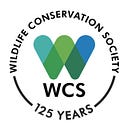Averting a Jaguar Poaching and Trafficking Crisis
By Adrian Reuter, John Polisar, and Rob Wallace | October 3, 2019

In 2014 in Bolivia, a group of conservationists with the Wildlife Conservation Society (WCS) was surveying Madidi National Park when they heard an advertisement on their portable radio offering money for jaguar teeth. After informing Bolivian authorities, further investigation led to significant seizures and arrests. The emerging jaguar-poaching crisis recalled a similar period more than four decades earlier.
Before 1975, a thriving international fur trade market drove hunters into remote reaches of Mesoamerica and the Amazon, significantly depleting jaguar populations and putting the species at risk. But in 1975, the Convention on International Trade in Endangered Species of Wild Fauna and Flora (CITES) entered into force, prohibiting all commercial trade of jaguars and their parts across international boundaries.
“A re-emergence of international trade in jaguar parts could reverse the conservation gains achieved over decades of dedicated work by many actors.”
The listing on CITES and its implementation resulted in countries successfully shutting down the jaguar fur trade and associated poaching. This step — in combination with the creation of large protected areas and recognition of indigenous territories across the species’ range and their effective management — allowed jaguar populations to rebound. Since that time, the main threats to the jaguar have been the destruction and degradation of habitat, reduction of natural prey through over-hunting, and direct killing due to conflicts with ranchers.

These factors have continued to place pressure on jaguar populations, but have been offset by a mixture of law enforcement and sustainable livelihood incentives to accomplish conservation goals in and around the protected areas and indigenous lands. Where well executed, those efforts have led to jaguar population stability, and even population increases in some areas.
However, starting in 2010 evidence emerged that illegal trade in jaguar parts in Latin America was resuming. This was not primarily of furs this time, but of jaguar teeth. By 2014, credible records indicated trade in parts in Suriname and Bolivia. In both countries, the Asian community was involved and several seizures over the recent past show Asian countries as primary destinations and potential drivers of existing and emerging demand.
“This week’s illegal wildlife trade conference in Peru provides an opportunity for threat information on jaguars to be shared with governments in their natural range, as well as with potential transit and destination countries.”
A re-emergence of international trade in jaguar parts, even if still entirely illegal, could stimulate hunting expeditions for jaguars, reversing the conservation gains achieved over decades of dedicated work by many actors. The plight of Asian tigers — populations drastically depleted due to trade in their body parts — illustrates the real threat of jaguar population declines and local extinctions. Further, recent research by WCS in Mesoamerica indicated that allowing even casual local trade in parts from jaguars killed during cattle-cat conflicts may generate an incentive for lethal control, rather than working towards human-jaguar coexistence.
Because of the potential potency of that threat, it is essential that we improve our knowledge about where, when, and how this threat may be re-emerging, and how it can be addressed.

With a plenary session specifically dedicated to this priority issue, the 1st High Level Conference of the Americas on Illegal Wildlife Trade in Lima, Peru being held this week provides an opportunity for threat information on the Americas’ largest felid to be shared and discussed with governments within the jaguar’s natural range, as well as with potential transit and destination countries. The commitment of such countries to take action will be key to ending this illegal trade and dismantling any existing trafficking networks.
We urge relevant national authorities in both source and potential consumer countries to prioritize the gathering of information on the illegal jaguar parts trade, to create archived reports on seizures, and to prosecute violators. Educating and changing behavior of the public about the trafficking in jaguar parts, and expanding law enforcement in urban centers, seaports, and other hubs where wildlife trafficking occurs, can help contain the threat.
“Given the urgent threat resumed trade represents, it is essential to strengthen capacities of authorities for improved enforcement actions and execution of increased penalties.”
WCS has conducted decades of research and conservation programs on the ground across jaguar range. We work with governments, indigenous and local communities and many other partners on the conservation of these big cats and their habitats in nine countries (Guatemala, Honduras, Nicaragua, Colombia, Ecuador, Peru, Bolivia, Paraguay, and Brazil) — ensuring that the species thrives in some of the most important strongholds across its range.
Given the urgent threat resumed trade represents, it is essential to strengthen capacities of authorities for improved enforcement actions and execution of increased penalties, promote regional and trans-regional collaboration among enforcement authorities, and ensure that decisions are made based on the best information available.

We recently completed an investigation of online trade in jaguar parts that spanned seven languages and three continents, collecting data from source and potential destination countries. The first and preliminary results of these investigations, include 251 records of posts advertised as jaguar on 37 online platforms across 21 countries, will be shared during the High-Level Summit and are intended to complement information collected in field and market studies.
With dedicated effort by all parties with a stake in jaguar conservation, the day will come soon when a radio carried into the forest during a routine survey will serve as a welcome source of news and entertainment, without the slightest possibility of carrying the sad sales pitch for yet another jaguar poached for its teeth, claws, or skin.
Adrian Reuter is Latin America Regional Wildlife Trafficking Coordinator for WCS (Wildlife Conservation Society). John Polisar is WCS Jaguar Conservation Program Coordinator. Rob Wallace is Director of the Greater Madidi-Tambopata Landscape Conservation Program for WCS Bolivia.
